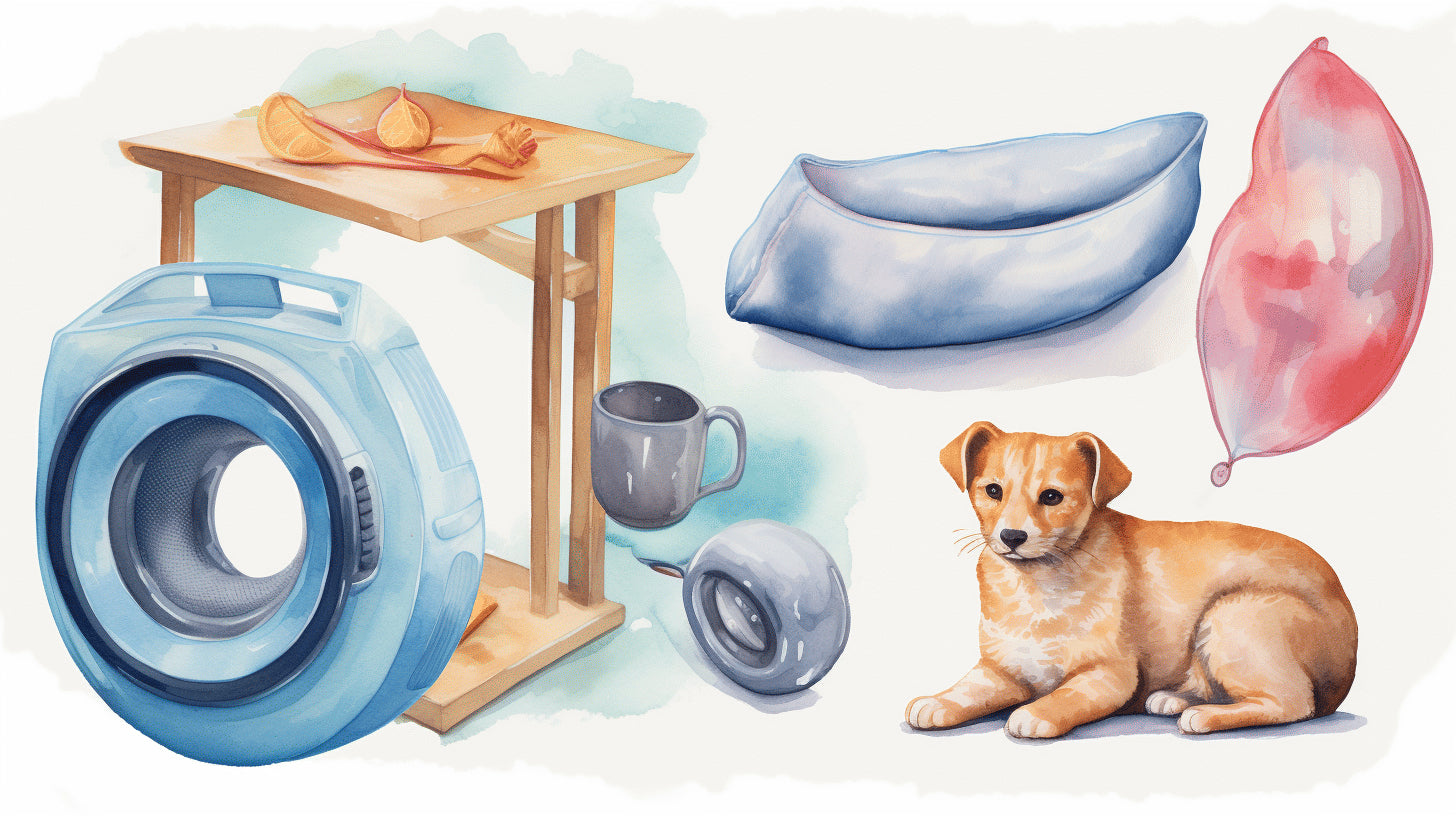Owning a pet is a joyful and rewarding experience filled with furry cuddles and wagging tails. Yet, it's not without its challenges, as they are totally dependent creatures requiring our full attention and care. One of the biggest responsibilities pet owners have is ensuring the safety of their loving companions, which can be complex given the plethora of situations pets might find themselves in - at home, during travel, or even amidst unforeseen emergencies. This comprehensive guide aims to shed light on various aspects of pet safety, from travel precautions to preventing pet bites, offering useful insights and practical tips. Whether you're a seasoned pet owner or someone considering bringing a pet into your home, this guide has essential information to help keep your fur babies safe, healthy, and happy.
Travel Safety for Pets
Travelling with pets can be a highlight in an adventurer's life, but ensuring our furry friends' safety should always be the top priority. It's worth noting that over 50% of people take their dogs with them in the car, yet only 16% actually restrain their dogs for safety. As pet owners and loving companions, we should strive to increase this percentage. Let's explore some best practices for pet travel safety, in the air and on the road, to ensure our pets are secure, comfortable and stress-free for the entire journey.
Restraining Pets in Vehicles
Getting out on the open road with your pet can be a great bonding experience. However, we must remember that safely restraining our pets in vehicles is not only for their benefit but ours as well.
-
It's For Their Worth Too
If you have a sudden brake or collision, a loose pet can be very dangerous. They can be thrown around, potentially causing injury to themselves and also to the passengers. -
Prevents Distractions
An unrestrained pet can cause distractions to the driver. They might jump around or even try to climb in your lap, leading to unsafe driving conditions. -
No Unwanted Escapes
When pets are properly restrained, risk of them escaping when the doors open is greatly lowered.
There is an enlightening post that has more information about the Role of Personal Security Devices in pet safety. These devices can be an excellent aid in ensuring your pet's safety and should be considered as part of your pet-travel-kit.
Air Travel Safety
When it comes to air travel, it's crucial to take extra precautions for our pets. Between 2010 and 2020, over 250 animals have died during or immediately after airplane travel, emphasizing the significance of pet safety while flying.
-
Check Airline Policies
Different airlines have different rules and regulations when it comes to pet travel. Make sure you're familiar with them before setting off on your journey. -
Health Checks
Ensure your pet is fit for travel. Visit the vet for a routine check-up before your planned trip. -
Comfortable Carriers
Ensure the carrier is spacious enough for your pet to comfortably sit, stand, turn around, and lie down. The carrier should be well-ventilated.
Traveling with pets can be a joyous experience, but safety should never be compromised. Following the above tips can ensure a safe travel experience for both you and your dear furry friend.
Dog Bite Prevention
Bringing a cuddly, four-legged fluff-ball into your home can jumpstart a treasured bond of love and loyalty. Dogs are beloved companions, and with the proper training, they can fit seamlessly into our lives. However, it's crucial to remember that dogs, much like humans, have personal boundaries and unique temperament traits, and thus call for their own unique measures of care. With regards to dog bites, they're far from something to be scoffed at. Every year, medical care becomes a necessity for an unsettling count of approximately 750,000 dog bite victims.
But don't let that whittle down your enthusiasm for adopting a furry friend – with the right knowledge and precautions, you can ensure a safe environment for everyone involved.
First and foremost, it's beneficial to carefully choose a dog that fits your lifestyle. Each breed has its own personality traits, and some are known to be more aggressive than others. It's ideal to consider the age, health, and temperament of a dog before bringing it into your family.
Next, understanding your dog's behavior is a crucial step. Many bites occur when a dog feels threatened. Minding your dog's personal space, reading their body language, and not forcing interaction can go a long way in curbing any unpleasant incidents.
Training your dog efficiently is another significant step. Dogs should be trained from an early age to obey commands like "sit," "stay," "no," and "come." Moreover, socializing them with other dogs and people brings about benefits twofold: it helps them enjoy a wider variety of social situations and makes them less likely to be scared or aggressive in unfamiliar settings.
In addition to training, make sure your pet is healthy and well taken care of. Taking your pup for regular vet checkups ensures he's in tip-top shape. A dog with painful medical conditions could be more likely to bite.
Lastly, and this is paramount, never leave young children unsupervised with a dog – regardless of how friendly the dog may seem. Kiddos might accidentally hurt or scare a dog, prompting a fearful or protective reaction in return.
In short, taking steps toward dog bite prevention creates a harmonious home for everyone. Your cuddly canine friend deserves an environment where they can strive to be their best and most loving self. And you, as their guardian, are paramount in creating such an environment. Together, with love, compassion, and understanding, you can ward off the menace of dog bites once and for all.
Cat Bite Prevention
Cats, with their flashing eyes and tantalizingly plush fur, can be irresistibly cute and hard to resist. A gentle petting session, however, can quickly morph into a painful bite when least expected. In 2021, there were an estimated 400,000 cat bites, leading to a shocking 66,000 hospital emergencies. If you've ever fallen victim to a seemingly harmless feline, you'll fully appreciate why veering towards the side of caution is necessary.
Understanding Cat Behavior
Critically, it’s paramount that we understand cats are not inherently dangerous or spiteful. Instead, their biting behavior can be attributed to various factors. This might include discomfort, fear, overstimulation, or even their natural predatory instincts. Recognizing these signs and respecting their boundaries is the first preventive measure.
Tips for Preventing Cat Bites
Below are a couple of strategies to ensure that your interaction with cats remains as safe and pleasant as possible:
- Respect Their Space: Not all cats appreciate being touched or carried around. Always let them make the first move, and refrain from disturbing them while they're asleep or eating.
- Recognize the Warning Signs: Be attuned to your cat’s body language. If they start hissing, growling, or their ears fold back, it's time to take a step back.
- Redirect Their Attention: During play sessions, use toys instead of your hands. This not only keeps your hands safe from playful bites but also satisfies their hunting instincts.
- Regular Wellness Check-ups: Unexpected aggression could be a sign of underlying health issues. Keep up with regular vet visits to ensure your kitty is in tip-top condition.
Remember, every cat is unique and what might work for one might not work for another. Patience, understanding, and respecting their boundaries are the keys to cohabiting peacefully with our feline friends.
Providing Safe Homes for Pets
Creating a safe, comfortable, and loving home for a pet is one of the most rewarding experiences you can have. It's a journey filled with both joy and challenges, and it is always worth it for the unconditional love that pets bring into our lives. With approximately 355,000 dogs and cats tragically killed in shelters across the United States due to lack of safe homes each year, there's never been a more critical time to consider providing a safe home for a pet.
We are talking about more than just a roof over their heads. A safe home for a pet encompasses their physical, emotional, and social well-being. Let's now look at the key aspects that make a home genuinely safe and welcoming for pets.
- Food and Water: This may seem like a given, but pets need access to fresh, clean water and nutritionally balanced food at all times.
- Appropriate Shelter: Depending on the type of pet, shelter needs can vary. Dogs and cats should be indoor pets with access to safe outdoor areas for exercise.
- Regular Exercise: Pets need regular physical activity for their health and happiness. How much activity varies by animal age, breed, and health status.
- Medical Care: Regular veterinary checkups are essential to catch any potential health issues early. This includes vaccinations, spaying or neutering, and access to emergency care.
- Mental Stimulation: Pets aren't just physically active creatures; they are mentally active too. Toys, challenges, and interaction with their owners are crucial for their mental health.
- Respect: Last but not least, respecting a pet's needs, nature, and personality makes a home safe and welcoming. This includes giving them space when needed and disciplining them appropriately.
Just like humans, pets are individuals with their own unique personalities, quirks, and needs. Providing a safe home is about understanding and accommodating these characteristics, thereby enriching the life of your furry (or not so furry) friend significantly. Remember, by giving a pet a safe home, you're not only saving a life - you're gaining a loyal, loving companion for life.
Each additional safe and loving home for a pet brings us one step closer to reducing the heartbreaking number of 355,000 animals being euthanized every year in animal shelters. Consider opening your home to a pet in need - it's a decision that will change not only their life but yours as well.
Emergency Medical Care for Pets
Understanding the importance of emergency medical care for pets can be a literal life-saver. In the world of pet care, emergencies happen abruptly, and more frequently than you'd think - in fact, every 2.5 seconds, a pet in the U.S. receives emergency medical attention.
Much like humans, our four-legged family members need immediate medical attention during critical situations. Unfortunately, recognizing these situations in pets can be tricky due to their natural instinct to hide sickness or pain.
Some common situations that require emergency medical care for pets include:
- Trauma: This includes car accidents, falls, or fights with other animals. Obvious injuries like broken bones or internal damage may require immediate attention.
- Severe vomiting or diarrhea: More than two episodes in a 24-hour period, or in combination with other symptoms like lethargy, could mean something is seriously wrong.
- Difficulty breathing: Any signs, including excessive coughing, wheezing or rapid breathing, could indicate an emergency.
- Seizures: While a single seizure is not necessarily an emergency, a pet having multiple seizures within a 24-hour period needs medical attention right away.
In addition to these, there are other signs such as loss of consciousness, unresponsiveness, or extreme changes in behavior that could signal an emergency.
If you notice any of these signs or symptoms in your pet, it is imperative to seek immediate medical assistance. Much like in human medicine, time is of the essence in veterinary medicine – prompt treatment can make a significant difference in your pet’s prognosis.
"The greatness of a nation can be judged by the way its animals are treated." - Mahatma Gandhi.
These words echo the utmost truth. As caregivers to our pets, we can ensure their well-being by understanding their health needs and providing timely medical care when needed. When it comes to matters of the heart, your pet's emergency health care should hold no compromise. So let's together vow that our adorable companions receive the swift, immediate attention they potentially need. Therefore, understanding and availability of emergency medical care for pets is not just a necessity - it's a responsibility.
Pet Ownership Statistics
Have you ever walked around your neighborhood and found yourself surrounded by a furry symphony of wagging tails and purring creatures? It might not surprise you to learn that the American landscape is filled with pet-obsessed families. In fact, according to a study conducted by the American Humane Society, over 70% of American households had a dog or cat in 2012. Now, unwrap that statistic for a moment.
Clearly, Americans don't just like pets, they absolutely love them! This overwhelming figure represents an emotional investment and profound bond between pets and their human parents. Just imagine, nearly three out of four homes provide shelter to a beloved canine or feline companion.
These figures underscore a few notable trends in pet ownership:
- Rapid increase: This data points to a dramatic upward trajectory in pet ownership across the U.S., given that such a large portion of the population has pets.
- Pet diversity: Although dogs and cats are always crowd-pleasers, this trend also suggests an increase in the diversity of pets, including parrots, hamsters, and even exotic reptiles.
- Shaping industries: The rise in pet ownership significantly impacts various industries, from pet food manufacturing to veterinary services and even the real estate market, where more homes are designed with pets in mind.
"Pets are not our whole life, but they make our lives whole." - Roger Caras
This love affair with pets takes many shapes and forms. Some people seek active companions in dogs, while others cherish the peaceful company of a purring cat on their lap. Whatever the case may be, this statistic reaffirms one thing - pets are less of a luxury and more of a life partner, worming their way into the hearts and homes of most Americans.
So next time when you see a happy canine wagging its tail in the park or a content cat purring in a warm lap, remember they represent a profound shift in American society. A shift towards nurturing and celebrating human-animal bonds, a testament to the fact that we, as a society, recognize and cherish the unparalleled companionship and unconditional love our pets provide us daily.
Understanding the pets' stats is more than just numbers. It's about exploring the bond humans share with their furry, feathery, or scaly friends. And about embracing the love and joy they bring into our lives.
Dressing up Pets for Occasions
Imagine this: you are planning an all-out Halloween party, complete with decorations, snacks, costumes, and even a spooky playlist. As you finalize your costume imagining the great time you are about to have, your gaze falls on your beloved pet - be it a dog, a cat, or a parrot. Instantly, your party seems incomplete without them joining the fun. Worry not; you're not alone in feeling this way. In fact, more than 75% of pet owners share the same enthusiasm to include their pets in the festive spirit, particularly for Halloween and other fall occasions.
Whether it's a birthday bash, a festive get-together, or just another fun weekend, dressing up your pet can add an extra layer of charm and excitement to the occasion. Not only can it make for some adorable pictures, but it can also be a form of bonding with your pet.
However, it's important to keep a few things in mind when diving into the world of pet costumes:
- Safety First: Before you begin searching for the perfect outfit, make sure it's safe for your pet. Avoid costumes with small parts that can be chewed off and swallowed.
- Comfort is Key: Make sure any outfit you choose for your animal friend does not restrict their movement, sight, or ability to feed or hydrate themselves.
- Know Your Pet's Preferences: Like humans, pets have their own personalities. Make sure to pick costumes that suit your pet's temper and tolerance levels. Some pets might not enjoy the experience, in which case, it’s best to skip it.
Dressing up pets for occasions is a cute and fun way to celebrate together with your furry, feathery, or scaly friends. However, it's important to remember it should be a joyous activity for both you and your pet. Ensuring their comfort and safety while respecting their personality will ensure it remains a delightful experience for all.
In the words of famous author Roger Caras, "Dogs are not our whole life, but they make our lives whole." Here's your chance to make their life a bit more colourful too! So, the next time you plan an occasion, don't forget to include a little something for your pet because, after all, they are a part of the family!
Pet Training Industry
The pet training industry is indisputably a rapidly growing sector globally, attributable to an immense population of pet lovers who believe in nurturing and grooming their furry pals to be obedient, disciplined, and sociable. The flourishing pet market and the escalating indulgence of pet owners towards their pets' wellness efforts have largely contributed to the pet training industry's significant boom.
As the pet training industry expands, so does the opportunity for skilled pet trainers to turn their passion into thriving businesses. From obedience training for puppies to behavior modification for older dogs, the range of services and techniques offered continues to expand, allowing trainers to specialize and excel in their chosen niches.
However, like any vibrant industry, it's the key players and standout regions that inevitably draw the most attention. In this regard, North America holds the honor of leading the pet training industry.
Why is North America such a dominant force in the pet training industry? There are several factors at play:
- High Pet Population: North America, specifically the United States, has the highest number of pet ownerships, translating to a massive demand for pet training services.
- Pet-Centered Culture: The respectful, considerate treatment of pets in North America, where they are regarded as family members, not just animals, plays a role in this dominance.
- Spending Capacity: North American pet owners often have a high capacity for caring for their pets, investing not only in quality food and veterinary services but also in pet training and enrichment.
In fact, according to some interesting insights, the global pet training industry generated the highest revenue in North America. This does not mean the tide cannot shift; continuous evolution is, after all, the nature of robust industries. But for now, forces seem aligned to keep North America firmly in the lead role in the pet training domain.
In summary, the pet training industry is witnessing considerable growth, with North America riding the crest of this global wave. The soaring market size combined with pet owners spending generously on their loved pets' wellbeing has fueled the demand for pet training services, fostering the industry's overall growth.
The love people have for their pets will unlikely wane, and thus the boom of the pet training industry isn't going to slow down anytime soon. It's an exciting time, full of opportunities for anyone considering stepping into the world of pet training.
Ensuring Pet Safety During Disasters or Emergencies
In the midst of unexpected disasters or emergencies, your pet's safety is paramount. During these challenging times, it's vital to be prepared and make accommodations for your beloved pets just as you would for the other members of your family.
Firstly, it's essential to have a disaster kit ready for your pets. This should include:
- Food and water for at least five days
- Medications and medical records stored in a waterproof container
- A carrier or cage that's large enough for your pet to turn around
- Sanitation tools like litter, paper towels, and plastic bags
Also, consider having a picture of you and your pet together to help you document ownership in case you get separated. A picture can also prove useful to help others identify your pet. Collars with ID tags should be a must for your pets.
Beyond simple preparations, sometimes ensuring the safety of your pets means investing in products designed for their wellbeing during stress-inducing situations. One such product that fits the bill remarkably well is the Pet Safety Deluxe Kit, crafted by a brand known for championing pet safety - Empowered by Ashley. They have designed this kit to inspire confidence in pet-owners, knowing they are well-prepared in case of an emergency. The safety of your pet is a priority, and their innovative product range is a wonderful testament to this fact. Click here to explore and buy their Pet Safety Deluxe Kit.
Remember, advance planning is crucial to protect your pets during emergencies or natural disasters. It only takes a few minutes to prepare, but can make a world of difference when the unexpected occurs.
Frequently Asked Questions
-
What are some essential pet safety tips for pet owners?
Some essential pet safety tips for pet owners include: keeping pets properly vaccinated, providing a safe and secure environment, using pet-friendly products, providing proper nutrition and hydration, regular exercise and mental stimulation, and being aware of potential hazards in and around the home.
-
Are there any specific foods that are dangerous for pets?
Yes, there are several foods that are dangerous for pets, including chocolate, caffeine, grapes and raisins, onions and garlic, xylitol (found in many chewing gums and candies), alcohol, and certain types of nuts. It's important to keep these foods out of reach of pets to avoid potential health issues or poisoning.
-
How can I pet-proof my home to ensure my pet's safety?
To pet-proof your home, you can start by securing any hazardous items or chemicals out of your pet's reach. Keep all electrical cords and small objects tucked away, lock cabinets and trash cans, remove poisonous plants, and install baby gates or barriers in areas where your pet should not have access. Regularly check for any potential hazards and make necessary adjustments.
-
Is it necessary to have identification tags or microchipping for my pet?
Yes, it is highly recommended to have identification tags on your pet's collar with your contact information, including your phone number and address. Additionally, microchipping your pet provides an extra layer of safety, as it allows for easy identification and retrieval of your pet in case they get lost. Make sure to keep the microchip information up to date.
-
What should I do in case of a pet emergency?
In case of a pet emergency, it is important to remain calm and contact your veterinarian or the nearest emergency veterinary clinic immediately. It is recommended to have the contact information for a 24-hour emergency veterinarian saved in your phone or readily accessible. Follow any instructions provided by the veterinary professional and transport your pet safely to receive medical attention.




















Leave a comment
This site is protected by hCaptcha and the hCaptcha Privacy Policy and Terms of Service apply.